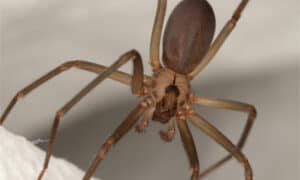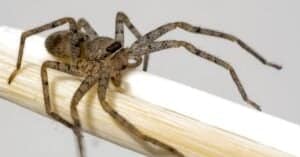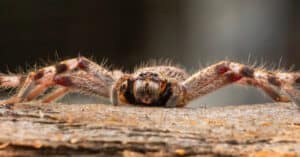There are more than 50,000 species of spiders in the world and they are some of the most fascinating and industrious animals around. Spiders are best known for their ability to produce silk which they use to create webs with. However, when we think of spider webs we think of reasonably small sticky areas which are used to capture prey with. What we don’t imagine is a web as long as two buses, but deep in the heart of the Madagascan jungle is an orb-weaver spider that can make exactly that. So, join us as we discover the largest spider web ever found!
What are Orb-Weaver Spiders?
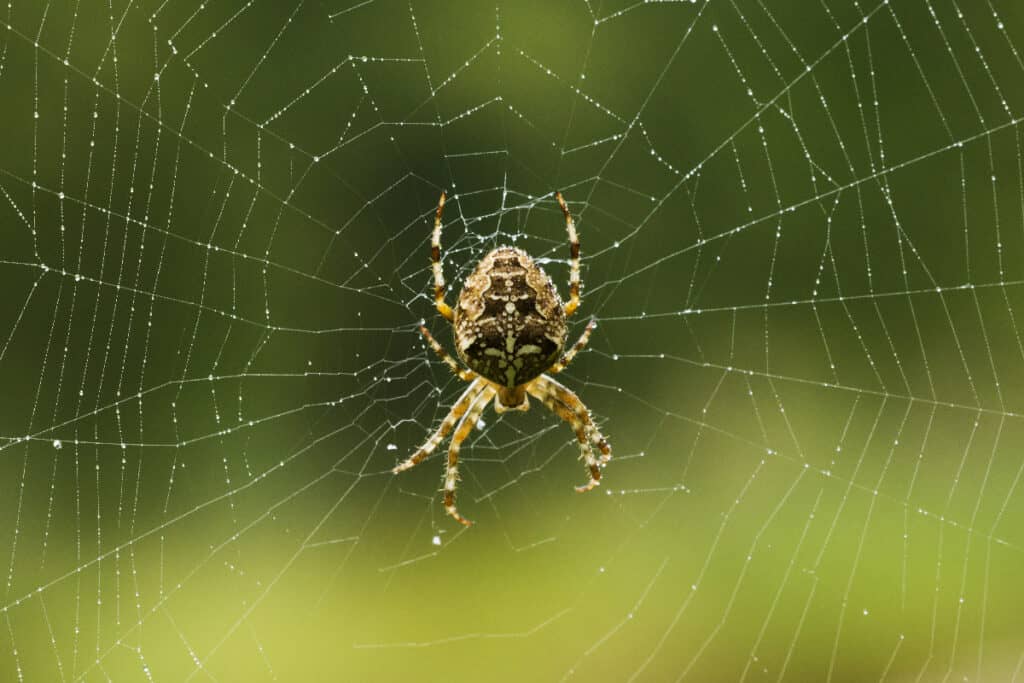
Orb-weaver spiders create wheel-shaped webs
©iStock.com/mirceax
Some of the biggest webs in the world are orb webs. These are wheel shaped webs that are usually suspended between trees or shrubs. Most, although not all, orb webs are made by orb-weaver spiders, which are spiders from the Araneidae family. Orb-weavers are active during the evening and night-time hours. Many of them actually consume the old web and build a new one every day, resting for only an hour between.
Spider webs are incredibly fascinating engineering feats and they are designed to perform three main functions. These main functions are to intercept and stop the prey, keep their web intact while doing so and then to trap them either by entanglement or sticking to it. However, contrary to common belief, not every spiders web is super sticky, and orb webs fall into this category. Instead, orb webs tend to only be sticky enough to keep the captured prey in place long enough for the spider to subdue them. One of the reasons for this is that stickier webs become more visible to prey, who subsequently avoid them. Therefore, the orb webs are not too sticky so they can remain hidden. This increases the chances of prey colliding with them. As a consequence of this, only around half of the prey that collide with orb webs are successfully caught.
Most species of orb-weaver spiders subdue their prey by biting. Once subdued they completely encase them in silk, ready to be consumed later. The web itself also acts as a line of communication for the spider. This is because most spiders can sense the movement of prey on the web through the threads as soon as they land on it.
The Largest Spider Web Ever Found
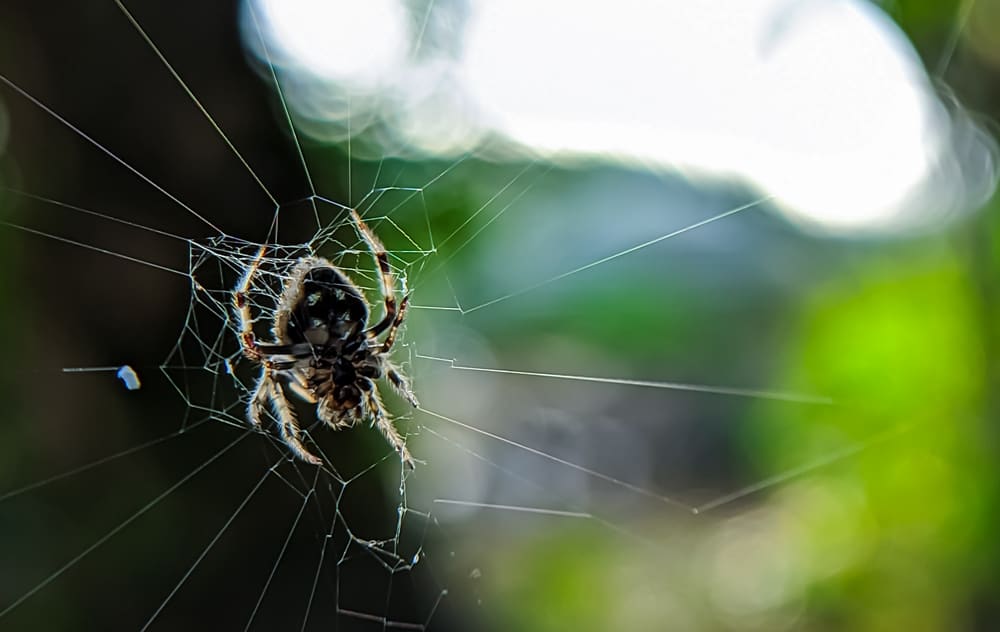
Darwin’s bark spider is an orb-weaver spider that produces the largest known webs with the strongest silk.
©azrin_aziri/Shutterstock.com
The largest spider web ever found was a massive 82 foot wide web spanning a river in Madagascar. Discovered deep in the heart of the Andaside-Mantadia National Park, this humongous web was created by a little known spider – the Darwin’s bark spider. Darwin’s bark spiders are orb-weaver spiders and they produce the largest webs of any spider in the world. Incredibly, these spiders produce the strongest silk of any spider. This means that their webs are the strongest webs in the world as well as the largest. In fact, these webs are made from the strongest material in the world, 10 times stronger than Kevlar!
The super-strong webs built by these spiders are always located across bodies of water, something that no other spider in the world does. Spanning wide swathes of river, these immense webs hang in mid-air with inch wide strands, creating one of the most breathtaking sights in the world. The entire size of these webs can be up to a huge 30 square feet. Held in place by 80 foot long anchor lines, these webs can endure immense stress without breaking. The key to their success is thought to be their elasticity which is double that of any other orb-weaver spider.
Despite its immense size and strength, these webs are simplistic in their design. They are created by the spider floating the long anchor line on the air currents until it catches on the undergrowth at the other side of the river. The orb is then created underneath the initial strand in a simple fashion. However, the silk threads in the upper half of the web are usually doubled to give the web even more strength.
About Darwin’s Bark Spiders
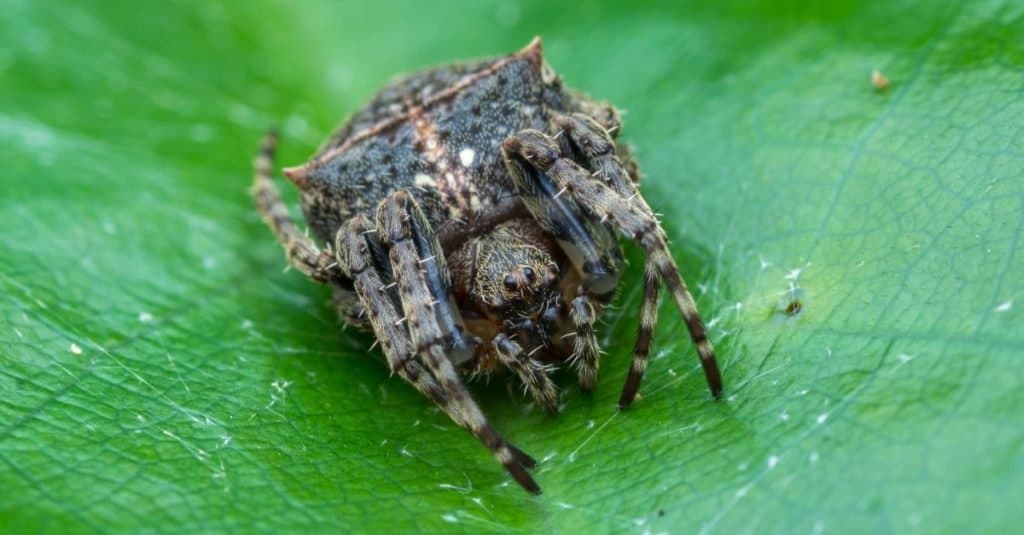
Darwin’s bark spiders produce the largest webs of any spiders, but are no larger than an inch long themselves.
©Elmanther Lee/Shutterstock.com
Size
With such an incredible web, it would be easy to assume that it must be some kind of super-sized spider that produces something so huge. However, these fascinating spiders are actually no bigger than one inch long. Like most spiders, they exhibit strong sexual dimorphism. The females are much larger than the males, although even they only reach lengths between 0.7 and 0.9 inches long.
Appearance & Habitat
Discovered only recently in 2009, Darwin’s bark spiders (Caerostris darwini) are named in honor of Charles Darwin. They are orb-weaver spiders which are from the family Araneidae, which is the third largest spider family. Female Darwin’s bark spiders are typically black with white hairs on their abdomen and legs. They also have two distinctive humps on their cephalothorax. Males are usually light or reddish brown with similar markings. Darwin’s bark spiders are native to Madagascar. They live near bodies of water such as lakes, rivers, and streams, across which they create their impressive webs.
Behavior
Creating a web as large and as strong takes a lot of work. However, having such a large web means that they are capable of catching a lot of prey in one go. By making their webs across bodies of water Darwin’s bark spiders are perfectly positioned to catch large quantities of prey. Darwin’s bark spiders mainly eat aquatic insects, with mayflies making up a large part of their diet. Up to 32 mayflies have been observed on a web at one time as quite often the prey are unable to avoid the massive web.
Darwin’s bark spiders are not venomous to humans. However, females often either castrate or eat the males shortly after mating. This is thought to prevent them from mating with any other females.
The photo featured at the top of this post is © Hassan Najmy/Shutterstock.com
Thank you for reading! Have some feedback for us? Contact the AZ Animals editorial team.



